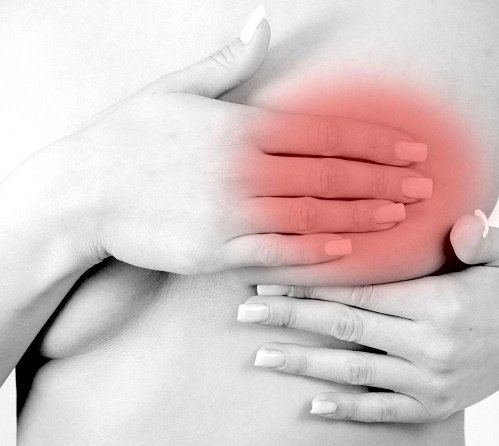5 most common types of cancer in women

A cancer diagnosis can often be directly related to your family medical history, lifestyle, and environment. You cannot control your family medical history, and only some aspects of your environment can be in your hands. There are 5 types of cancer most common in women and there are five risk factors that have to do with diet and habits, the cause of 30% of deaths from cancer. These include a high body mass index, insufficient consumption of fruits and vegetables, no physical activity, and consumption of tobacco and alcohol, and therefore these can be prevented.

“Preventive measures are so heavily underused by people. And yet they work. Everything in moderation really works.”
Table of Contents
The 5 most common types of cancer in women.
– Breast cancer accounted for 26 percent of cancer cases in women and 15 percent of the 272,000 cancer deaths in women that year. Chances of getting this type of cancer from a woman: 1 in 8.
– Lung and bronchial cancer accounted for 14 percent of cancer cases in women and 26 percent of all deaths. Odds of getting this type of cancer from a woman: 1 in 16.
– Colon and rectal cancers accounted for 10 percent of all cancer cases and 9 percent of all deaths. Chances of getting this type of cancer from a woman: 1 in 19.
– Uterine cancer it accounted for 6 percent of all cancer cases, and 3 percent of all deaths. Chances of getting this type of cancer from a woman: 1 in 41.
– Non-Hodgkin Lymphoma Cancer accounted for 4 percent of all cancer cases and 3 percent of all deaths. Chances of getting this type of cancer from a woman: 1 in 53.
As you learn about the common risk factors for each of these cancers, you can take steps to correct them within your own control.
The risks of breast cancer.
Risk factors for breast cancer, the most common cancer in women, include:
Age: Two out of three women with invasive breast cancer are 55 or older.
Family history: The risk is doubled if your mother, sister or daughter has had.
Race: White women are more susceptible than African-Americans, although African-American women are more likely to die from breast cancer, in part because their tumors can grow faster.
Dense breast tissue.
Previous radiation treatment to the chest.
More than average menstrual periods (starting before age 12, reaching menopause after age 55).
Not having had any pregnancies, or having the first pregnancy after 30 years.
Taking birth control pills: The risk level returns to normal 10 years after stopping the pill.
Previous treatment with the drug diethylstilbestrol (DES), once it has been used to prevent miscarriage.
Postmenopausal hormone therapy: Avoiding this treatment reduces the risk of breast cancer.
Not breastfeeding.
Being overweight and eating a high-fat diet.
Lack of exercise.
Drinking alcohol in large quantities: Researchers found that moderate consumption of Alcohol – just one to three drinks per week – puts you at higher risk for breast cancer.
Lung and bronchial cancer risks.
A look at the death rates among people diagnosed with this type of cancer shows how deadly lung cancer is. Most striking is our ability to lower those numbers: 80 percent of all lung cancers in women (and 90 percent in men) could be prevented if people don’t smoke; smokers are 10 to 20 times more likely to develop lung cancer than non-smokers. Family history also plays a role. Other risk factors include exposure to:
Second-hand smoke.
Radon gas.
Arsenic.
Tar.
Soot.
In addition to following an exercise plan and a healthy diet, limiting alcohol consumption can also help keep lung cancer at bay.
Colon and rectal cancer risks.
More than 90 percent of colon cancers occur in people 50 years of age and older. Risk factors include:
Personal or family history of colorectal cancer, polyps, or inflammatory bowel disease.
Inactivity.
Smoking.
Heavy alcohol use.
Low-fiber, high-fat diet that includes lots of processed meat and few fruits and vegetables.
Early detection is a life saver, especially when it comes to colon and rectal cancers. It usually takes 10-15 years for abnormal cells to grow in the colon, which means that if you have regular colonoscopies to detect polyps and remove them before they become abnormal, you can stay on top of this deadly disease.
A new study found a promising connection between calcium and dairy food intake and a lower risk of colon cancer. This study, which tracked 200,000 men and 200,000 women over a seven-year period, is important because a larger population sample is used to support smaller studies, with the same results.
Risk of uterine cancer.
Hormonal changes, especially estrogen-related, play a significant role in the risk of uterine cancer, also known as endometrial cancer. Risk factors include:
Greater than average number of menstrual periods.
No pregnancy.
Taking estrogen therapy.
Obesity and eating a high-fat diet.
Past or present use of tamoxifen for breast cancer.
Some types of ovarian tumors.
Polycystic ovary syndrome.
Age.
Diabetes.
Family history colon cancer.
Personal history of breast or ovarian cancer.
Some cases of endometrial hyperplasia, a thickening of the uterine wall.
Using birth control pills over a period of time, but ultimately having multiple pregnancies, can help lower your risk.
Non-Hodgkin Lymphoma Cancer Risks.
This disease, which can appear in the lymph nodes, spleen, tonsils and adenoids, thymus or bone marrow, attacks the body’s lymphatic system, which is part of the immune system. Risk factors include:
A weakened immune system, especially if related to long-term infection or an organ transplant.
Age: Most cases occur in people 60 years of age or older.
Exposure to certain chemicals, especially insecticides and herbicides.
Obesity.
Autoimmune diseases.
There are no known prevention methods for non-Hodgkin lymphoma, except to avoid diseases that cause immune deficiency; the most preventable of these diseases is HIV.


